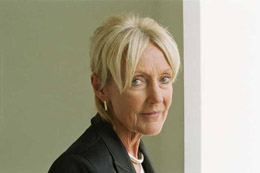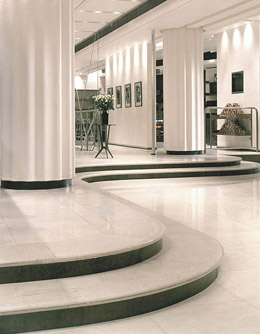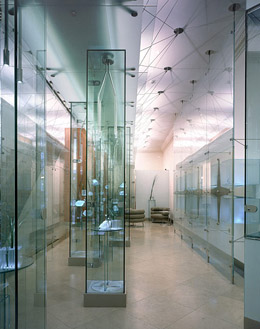
Clean beauty of glass and steel in Eva Jiřičná's interiors
 |
Influenced by interwar functionalism, glass and steel, at first glance cold materials, balance into perfect harmony in her interiors. "I draw inspiration from the art of nature, which employs perfect structures even in the smallest organisms," she says.
Her signature also includes tension cables for the famous glass staircases, which over the years have been refined into the perfect festive jewel: "It is a three-dimensional sculptural matter in space that gives people the opportunity to ascend," she describes. "Inside the objects, I am fascinated by light and working with it. I seek ways to bring it into the space. Brightness, transparency, and materials in their purest form."
 |
In her homeland, people were completely unaware of her work. A Moravian with a British passport, she became an émigré against her will in 1968 and only returned to Czechoslovakia for the first time in 1990. She currently leads an architecture studio at the Czech Technical University in Prague.
Her work in the Czech Republic embodies the modern Orangerie (a greenhouse with a steel skeleton) near Jelení příkop in the Prague Castle complex, the interiors of the Dancing House on Rašínovo nábřeží, the Černá labuť café above the Bílá labuť department store, and a pedestrian bridge in Brno. Also, the Prague hotels Josef and Maxmilian.
A good ticket into the world of world architecture was her quality education. Born on March 3, 1939, in Zlín, her father was an architect who worked for Tomáš Baťa. She herself studied this field at the Prague Technical University and furthered her studies with Jaroslav Fragner at the Prague AVU.
After her studies, she was offered an internship in England, and she left on August 1, 1968. Then came a letter from the embassy stating: "Your visa has been revoked and return to your homeland is undesirable for public interest."
 |
Later, she began collaborating with renowned architect Richard Rogers and then received commissions for several shops in central London, in the United States, and thus became independent: "At the turn of the seventies and eighties, fashion invaded London, becoming an important part of life. London opened up and brightened. I enjoyed coming up with ideas for displaying clothes in shops, how to hide an ugly cash register, how to light it."
In 1976, she established her own studio. She worked for the Lloyds insurance company, Lord Rothschild, and others. She designed the Canada Water bus station in London and the expansion of the library in Leicester. The British Queen awarded this lady of architecture the Order of the British Empire.
Her favorite book is The Little Prince by Antoine de Saint-Exupéry. And the men in her life have always been architects, including Jan Kaplický. She admits that living with her is not easy: "When my shoes start to pinch a little, I have to take them off. Then I walk barefoot on the mowed field, it hurts, but I have to endure it. I admit that work has been so important to me that it must be difficult to live with me. However, I have not parted with anyone in a bad way, and I have learned a lot from men."
Still elegantly Jiřičná claims that she does not have much sense for business and feels stronger in creation: "Creation is a constant search, a lot of work, and a sea of sweat. It rarely happens that a person reaches the goal. But it doesn't matter that one doesn't get there. The essence is precisely the process and the journey."
The English translation is powered by AI tool. Switch to Czech to view the original text source.
0 comments
add comment











